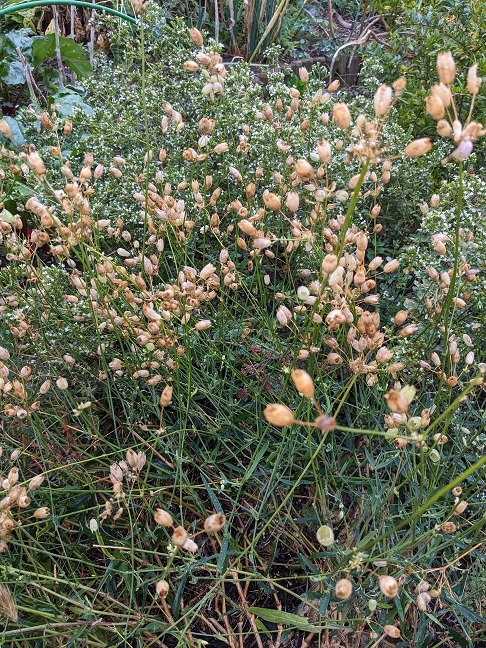Seed saving can be a useful skill to develop. It is a way to turn one plant into potentially hundreds or thousands. Maybe you have a plant that is thriving in your garden and you would like to plant more of them in other spaces, or have some to give to friends As perennial edible plants become more well known and more people are wanting to get hold of them, you should be able to connect with people who want either seeds, or young plants. Seed swapping events are becoming more popular. You may be able to trade your saved seeds for other seeds that you have always wanted.
The annual vegetable gardener needs to become proficient at saving seeds if they don’t want to have to buy a full stock every year or season when they basically start their garden from scratch again and again. Meanwhile, the perennial vegetable grower has the luxury of plants which will either remain as evergreens or regrow after a dormant season. Therefore there is less need to gather seeds. But some perennials are short lived, only lasting 3-5 years and need to be replaced. You may want to increase numbers of others as mentioned above.
How to save seeds
As flowers die, they form seed heads. These are usually initially green and plump looking. Gradually they turn brown and start to dry out. Inside the seed head there may be between one and hundreds of seeds. The seed heads and seeds come in all shapes and sizes. Wait for the seed heads to dry, but collect them before they fall off the plant. If the weather is wet or damp, lay the seeds out in a dry, warm spot to fully dry. If the seeds aren’t dried out enough, they risk germinating in storage and then running out of energy and dying. But, once they are properly dried, you can be stored seeds in a plastic bag or sealed container. They may then last for years.
You should store seeds somewhere dark and cool where the temperate doesn’t fluctuate greatly. A normal fridge or wine fridge are good for this. However you may not be popular with other members of your household if you fill the fridge with seeds.
Growing from seed
It is best to plant most seeds in the spring. I cannot claim to be an expert on growing all the different varieties. You can usually find information by internet searches, or you can revert to trial and error. I have had great success with musk mallow seeds. The resulting plants grow to a good size, flowering for many months in their first year. Others like King’s Spear and daffodil garlic are much slower to get going and may take a few years to reach full size.
There are several advantages to growing plants from your own seed. Firstly, it is free! Secondly, the plants that grow have come from plants that you know thrive in the conditions in your garden. It is likely that the seedlings will also thrive in local conditions. Make sure that you collect seeds from the best specimens in your garden if you have a choice. Thirdly, you know that your seeds are organic and not coated or sprayed with any fungicides which might harm the mycorrhizal networks in your garden.
Go ahead and give it a go! Let me know in the comments which perennial seeds you have had success with.

